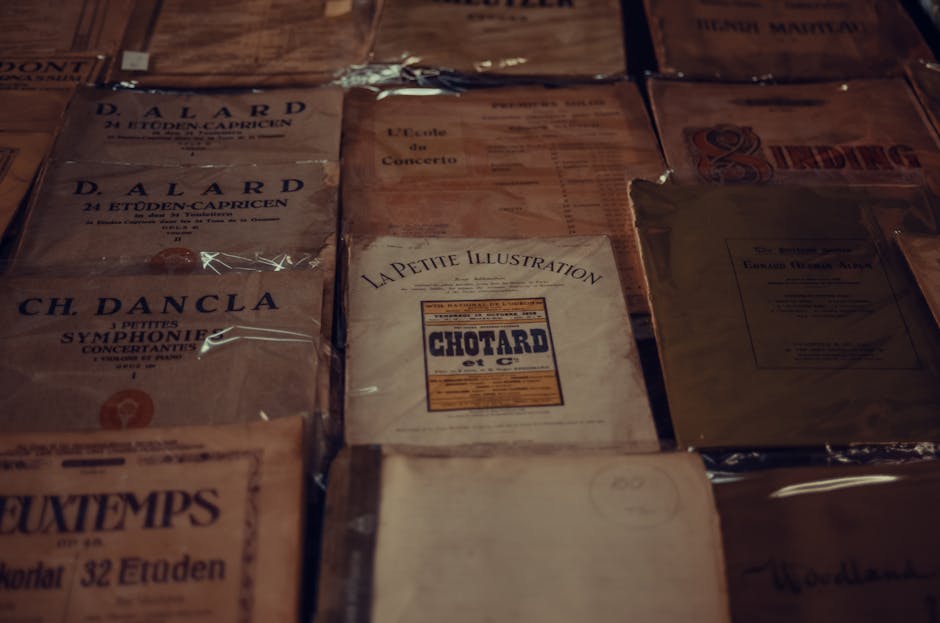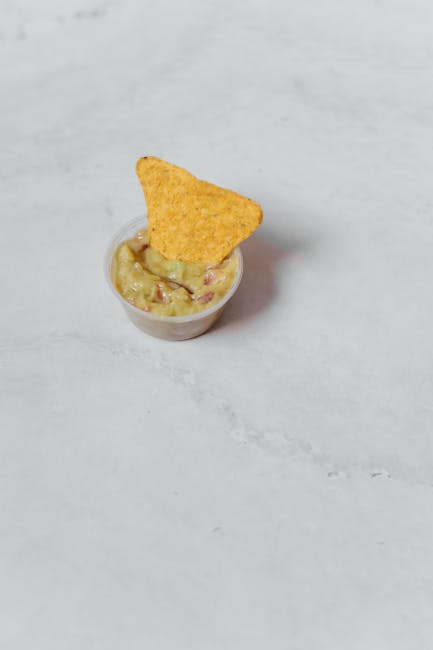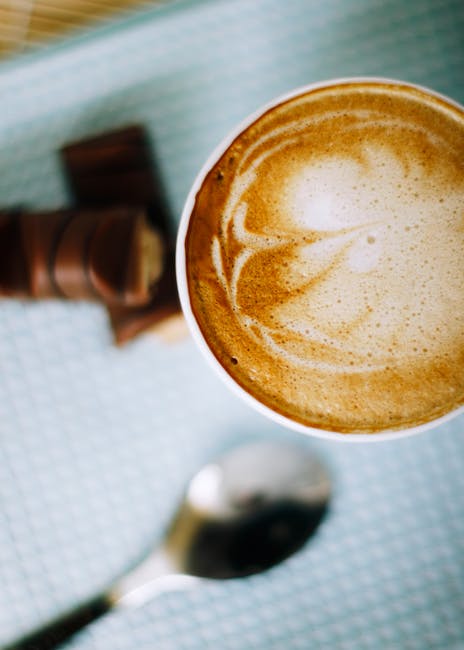The Classic French Mille-Feuille, also known as a Napoleon in some parts of the world, is a pastry of unparalleled elegance and rich history. Its name, translating to thousand leaves in French, perfectly describes its visually stunning layered structure. While the precise origin is debated, its roots firmly lie in French culinary tradition, likely emerging sometime during the 17th century, coinciding with the growing popularity of puff pastry. Early versions probably differed from the modern iteration, perhaps lacking the precisely layered cream and featuring simpler fillings. However, its fundamental structure – layers of crisp, buttery puff pastry separated by creamy fillings – remained a constant. The evolution of the Mille-Feuille reflects the broader development of French patisserie, showcasing the mastery of techniques like puff pastry creation, which itself is a testament to centuries of refinement.
The 19th century saw the Mille-Feuille solidify its place in French culinary culture, becoming a staple in high-end patisseries and eventually making its way into more everyday establishments. The pastry’s association with French high society helped cement its status as a symbol of sophistication and refined taste. Its intricate construction, requiring significant skill and precision, solidified its reputation as a challenging yet rewarding pastry to produce. This complexity also contributed to its price point, further reinforcing its image as a treat for special occasions or a demonstration of culinary expertise. Interestingly, the name Napoleon is believed to have emerged later, possibly due to its resemblance to the layered Napoleonic hat, although this association remains a matter of some speculation. The pastry’s popularity spread beyond France, with variations appearing in numerous countries, each reflecting local culinary preferences and ingredients.
Today, the Mille-Feuille continues to be a beloved classic, a testament to its enduring appeal. Annual global sales of pastries, though difficult to pinpoint precisely for Mille-Feuille alone, are in the billions of dollars, showcasing the immense popularity of this category of dessert. While exact statistics for Mille-Feuille sales are elusive, its consistent presence in patisseries and bakeries worldwide indicates its ongoing popularity. It remains a popular choice for celebrations, special events, and as a simple yet luxurious indulgence. The Mille-Feuille’s enduring legacy lies not just in its delicious flavor but also in its representation of French culinary heritage, a symbol of skill, artistry, and the enduring power of a classic recipe. Its complex layers and delicate balance of textures and flavors continue to captivate and delight palates across the globe, perpetuating its status as a true masterpiece of French pastry.
Ingredients and Measurements
Creating a truly classic French Mille-Feuille requires meticulous attention to ingredients and their precise measurements. The quality of your ingredients directly impacts the final texture and flavor, so don’t skimp on quality! We will be making enough pastry for approximately 8 servings.
For the Puff Pastry (Pâte Feuilletée):
- 250g (2 ½ cups) all-purpose flour, preferably strong bread flour for optimal layering. Using strong flour will give you a crispier, flakier result.
- 10g (2 tsp) salt. Don’t underestimate the importance of salt; it enhances the flavor of the pastry.
- 125g (1 cup) cold unsalted butter, cut into small cubes. The butter must be very cold to prevent it from melting and ruining the layering process. Consider chilling it in the freezer for at least 30 minutes before use.
- 125ml (½ cup + 1 tbsp) ice water. Use ice water to keep the dough cold. Gradually add the water, mixing until the dough just comes together. Do not overmix.
For the Pastry Cream (Crème Pâtissière):
- 500ml (2 cups) whole milk. Whole milk provides richness and creaminess. Using lower fat milk will result in a thinner, less flavorful cream.
- 100g (¾ cup) granulated sugar. Adjust sweetness to your preference, but don’t reduce it too much as it contributes to the stability of the cream.
- 50g (¼ cup) all-purpose flour. Ensure the flour is well-whisked into the egg yolks to prevent lumps.
- 4 large egg yolks. Fresh, high-quality egg yolks are essential for a smooth and creamy texture.
- 1 vanilla bean, split and scraped (or 2 tsp vanilla extract). Fresh vanilla bean provides the most authentic flavor.
For the Glaze (optional, but highly recommended):
- 1 cup powdered sugar
- 2-4 tablespoons of water or milk. Add water or milk gradually until you reach your desired consistency. The glaze should be thick enough to coat the mille-feuille but thin enough to flow smoothly.
Important Note: All ingredients should be measured accurately using a kitchen scale for the best results. Volume measurements can be less precise, leading to inconsistencies in the final product. Using a scale ensures consistent results every time.
Professional Tip: For the puff pastry, ensure your work surface and rolling pin are well-floured to prevent sticking. Gentle handling is key to avoid damaging the delicate layers of butter within the dough.
Pastry Dough Preparation (including resting times)
The foundation of a truly exceptional Mille-Feuille lies in its perfectly crafted pâte à feuilletage, or puff pastry. This recipe yields enough pastry for a single, large Mille-Feuille, approximately 12×18 inches. Achieving the signature layers requires precision and patience, particularly concerning resting times.
Ingredients:
- 250g all-purpose flour (plus extra for dusting)
- 10g salt
- 125g cold unsalted butter, cut into 1cm cubes
- 125ml ice water
Instructions:
1. Make the dough (détrempe): On a clean, lightly floured surface, create a well with the flour and salt. Gradually add the ice water, mixing with a fork until a shaggy dough forms. Avoid overmixing; the dough should be slightly sticky but not overly wet. Form the dough into a rough rectangle, wrap it tightly in plastic wrap, and refrigerate for at least 30 minutes. This initial rest allows the gluten to relax, resulting in a more tender pastry.
2. Prepare the butter block: Place the cold, cubed butter between two sheets of parchment paper. Using a rolling pin, gently flatten the butter into a 15cm x 15cm square. Ensure the butter remains cold and doesn’t soften; if it does, chill it again for 15-20 minutes. This step is crucial for creating the characteristic layers.
3. Enclose the butter: On a lightly floured surface, roll out the chilled dough into a 20cm x 20cm square. Place the butter square in the center of the dough. Fold the four corners of the dough over the butter, completely enclosing it. Seal the edges tightly by pinching them together.
4. First turn (simple fold): Gently roll out the dough into a large rectangle, approximately 40cm x 20cm, ensuring even thickness. Perform a simple fold: fold the top third down to the middle, then fold the bottom third up over the top. Wrap the dough tightly in plastic wrap and refrigerate for at least 30 minutes. This rest allows the gluten to relax and the butter to firm up.
5. Second and Third turns (double folds): Repeat the rolling and folding process two more times, each time rolling the dough into a rectangle and performing a double fold (fold the dough in thirds, then in thirds again). After each turn, refrigerate the dough for at least 30 minutes. The total resting time after the final turn should be at least 2 hours, or preferably overnight. This extended rest is essential for the development of the puff pastry’s layers and to allow the gluten to relax fully. The longer it rests, the better the results.
6. Final rolling and chilling: After the final resting period, gently roll out the dough to your desired thickness (approximately 3mm) for the mille-feuille layers. Chill the dough for at least 30 minutes before baking. This final chill prevents shrinkage during baking.
Professional Tip: Use a very sharp knife or a pastry cutter to ensure clean, even cuts when rolling and folding the dough. Avoid over-handling the dough, as this can lead to tough pastry. The success of your Mille-Feuille hinges on meticulous attention to detail and precise adherence to these resting times.
Puff Pastry Lamination (detailed explanation of folding and chilling)
The success of a classic French Mille-Feuille hinges entirely on the quality of its puff pastry. This involves a meticulous process called lamination, where layers of butter are incorporated into the dough to create the characteristic flaky layers. This section details the crucial steps involved in achieving perfect puff pastry.
Prepare your ingredients: Begin with 250g of all-purpose flour, a pinch of salt, and 125ml of ice water. For the butter block, use 125g of cold, unsalted butter, ideally kept in the refrigerator until just before use. The coldness of both the dough and the butter is paramount for preventing the butter from melting prematurely during lamination. Working with cold ingredients is absolutely crucial for proper lamination.
Mixing the dough: Create a well in the flour and salt on a clean work surface. Gradually add the ice water, mixing gently with a fork until the dough just comes together. Avoid overmixing, as this will develop the gluten and result in a tough pastry. Form the dough into a rough rectangle, wrap it in plastic wrap, and chill in the refrigerator for at least 30 minutes. This allows the gluten to relax.
Preparing the butter block: Place the cold butter between two sheets of parchment paper. Using a rolling pin, gently pound and flatten the butter into a 15cm x 15cm square. Ensure the butter remains relatively flat and even; any lumps will disrupt the even layering during lamination. This step is crucial for achieving even layers in the finished pastry.
First fold: On a lightly floured surface, roll out the chilled dough into a 25cm x 25cm square. Place the cold butter block in the center of the dough. Fold the four corners of the dough over the butter, enclosing it completely. Pinch the edges firmly to seal, creating a square package.
First turn: Gently flatten the dough package with your hands, then roll it out into a rectangle, approximately 40cm x 20cm. Now, perform a ‘letter fold’: fold the rectangle in thirds, like a letter, bringing the top third down to the middle, and then folding the bottom third up to meet the top. Wrap the dough tightly in plastic wrap and chill for at least 30 minutes. This resting period allows the gluten to relax and the butter to firm up, preventing it from oozing out during subsequent rolling.
Second and third turns: Repeat the rolling and folding process two more times, ensuring to chill the dough for at least 30 minutes between each turn. After each turn, the dough should be rolled out to approximately 40cm x 20cm before folding. Remember to keep the dough as cold as possible throughout this process.
Final chilling: After the third turn, wrap the dough tightly and chill it in the refrigerator for at least 2 hours, or preferably overnight. This extended chilling allows the gluten to fully relax and the layers to set, resulting in a supremely flaky puff pastry. This final chilling is essential for optimal results. After chilling, your puff pastry is ready for use in your Mille-Feuille.
Baking the Puff Pastry (Oven Temperature and Baking Time)
Baking puff pastry for a Mille-Feuille requires precision to achieve the characteristic layers of crisp, flaky goodness. The oven temperature and baking time are critical factors influencing the final product. Getting this right will result in a beautifully browned, airy pastry, while mistakes can lead to soggy or underbaked layers.
Preheat your oven to 400°F (200°C). This is crucial. Puff pastry relies on a sudden burst of heat to create steam within the layers, causing them to separate and puff. Starting with a cold oven will result in a dense, less flaky pastry. Allow your oven to preheat completely for at least 20 minutes to ensure an even temperature throughout.
Once preheated, carefully place your assembled puff pastry sheets onto a baking sheet lined with parchment paper. Do not overcrowd the baking sheet; this will impede air circulation and lead to uneven baking. Ideally, leave at least an inch of space between each sheet.
Baking time typically ranges from 20 to 25 minutes, but this can vary depending on your oven, the thickness of your pastry, and the desired level of browning. Begin checking for doneness around the 20-minute mark. The pastry should be a deep golden brown, and the edges should be puffed and slightly crisp. A gentle tap on the bottom should produce a hollow sound, indicating it’s baked through.
Avoid opening the oven door frequently during baking. Each time you open the door, you release heat and moisture, potentially causing the pastry to deflate. If you must check for doneness, do so quickly and carefully.
Professional Tip: For extra crispiness, you can lightly brush the surface of the puff pastry with an egg wash before baking. This will enhance the browning and create a beautiful sheen. Alternatively, you can use a simple milk wash for a softer finish.
Monitoring for doneness is key. Overbaking will result in a dry, hard pastry, while underbaking will leave you with a soft, gummy interior. Use both visual cues (golden brown color and puffiness) and the sound test to determine when your pastry is perfectly baked. If the edges are browning too quickly, you can loosely tent the baking sheet with foil to slow down the browning process.
After baking, remove the puff pastry sheets from the oven and let them cool completely on a wire rack. This allows for the pastry to fully crisp up and prevents sogginess. Cooling on a wire rack ensures proper air circulation, preventing the bottom from becoming soggy.
Remember that oven temperatures can vary, so it’s always a good idea to adjust the baking time based on your specific oven. Don’t be afraid to experiment and find what works best for your kitchen. Once you master the art of baking puff pastry, your Mille-Feuille will be truly exceptional.
Cream Patissiere Preparation (Custard Making Techniques)
The success of a Classic French Mille-Feuille hinges significantly on the quality of its cream patissiere. This custard provides the creamy, decadent filling that balances the crispness of the puff pastry. Mastering this recipe is crucial for achieving a truly exceptional mille-feuille.
Ingredients:
- 500ml whole milk
- 100g granulated sugar
- 1 vanilla bean, split and scraped (or 2 tsp vanilla extract)
- 5 large egg yolks
- 40g cornstarch (cornflour)
- 25g all-purpose flour
- 100g unsalted butter, cut into cubes
Instructions:
1. Infuse the Milk: In a medium saucepan, combine the milk, sugar, and vanilla bean (or extract). Heat over medium heat, stirring occasionally, until the sugar dissolves and the milk is just simmering. Do not boil. Remove from heat and let it steep for about 15 minutes to infuse the vanilla flavor. This step significantly enhances the custard’s aroma and taste.
2. Whisk the Egg Yolks: In a separate bowl, whisk together the egg yolks, cornstarch, and flour until smooth and pale yellow. Ensure there are no lumps. This thorough whisking is vital for preventing a grainy texture in the final custard.
3. Temper the Egg Mixture: Slowly pour about 1/3 of the warm milk mixture into the egg yolk mixture, whisking constantly. This tempering process gradually warms the eggs, preventing them from curdling when added to the hot milk. Then, pour the tempered egg mixture back into the remaining milk in the saucepan.
4. Cook the Custard: Cook the custard over medium-low heat, stirring constantly with a whisk or spatula. The mixture will thicken considerably as it cooks. Continue stirring continuously to prevent scorching and ensure even cooking. The custard is ready when it coats the back of a spoon and is thick enough to hold its shape. This usually takes about 5-7 minutes.
5. Strain and Incorporate Butter: Immediately remove the custard from the heat and strain it through a fine-mesh sieve into a clean bowl. This step removes any lumps or bits of cooked egg. Stir in the cubed butter, one piece at a time, until it is completely melted and incorporated. This adds richness and a lovely sheen to the custard.
6. Cool and Refrigerate: Press a piece of plastic wrap directly onto the surface of the custard to prevent a skin from forming. Allow the custard to cool completely before refrigerating. Refrigerate for at least 4 hours, or preferably overnight, to allow the flavors to meld and the custard to fully set. This step is crucial for achieving the optimal texture and flavor.
Professional Recommendations:
- Use high-quality ingredients for the best flavor.
- Don’t rush the cooking process; low and slow is key for a smooth custard.
- Strain the custard for a flawlessly smooth texture.
- Proper cooling and refrigeration are essential for optimal consistency and flavor development.
Assembly of the Mille-Feuille (Layering and Even Distribution)
The assembly of the mille-feuille is a crucial step that demands precision and patience. A flawlessly assembled mille-feuille boasts perfectly even layers, a generous yet controlled amount of pastry cream, and a visually stunning presentation. This section details the process in a step-by-step manner, ensuring a professional-looking result.
Begin by preparing your work surface. Ensure it’s clean, level, and large enough to comfortably accommodate your pastry components. Have your pastry cream ready in a piping bag fitted with a large, round tip (approximately 1cm in diameter). Use a chilled pastry cream for optimal handling and to prevent the puff pastry from becoming soggy. You’ll also need a palette knife or offset spatula for spreading and smoothing. For a standard mille-feuille serving 6-8 people, you will need three rectangular sheets of puff pastry (approximately 20cm x 10cm each) and approximately 500g of pastry cream.
Place one sheet of puff pastry on your work surface. This will form the base. Using your piping bag, pipe a generous but even layer of pastry cream onto the puff pastry, leaving approximately 1cm border along the edges. Avoid overfilling; too much cream will cause the mille-feuille to become unstable and potentially collapse. The cream layer should be consistent in thickness, approximately 0.5cm to 0.7cm high. Use the palette knife to gently spread the cream, ensuring even distribution and eliminating any air pockets.
Carefully place the second sheet of puff pastry on top of the cream layer. Gently press down to ensure good contact between the layers. Avoid excessive pressure, which could crush the puff pastry. Repeat the process of piping and spreading the pastry cream onto the second layer of puff pastry, again leaving a 1cm border. The quantity of cream should be consistent with the first layer.
Finally, place the third and final sheet of puff pastry on top. This will be the top layer of your mille-feuille. Gently press down to ensure all layers are firmly adhered. Use the palette knife to trim any excess puff pastry that may overhang the edges. For a neater finish, you can use a serrated knife to create a straight edge.
Once assembled, carefully transfer the mille-feuille to a serving plate or baking sheet. Refrigerate the assembled mille-feuille for at least 30 minutes to allow the layers to set and the cream to firm up. This will prevent the pastry from becoming soggy and enhance the overall structure. Before serving, dust lightly with powdered sugar and glaze with a simple chocolate ganache for an extra touch of elegance.
Professional Tip: For perfectly even layers, consider using a pastry guide or template to ensure consistent sizing of your puff pastry sheets before baking. This will ensure a visually appealing and balanced final product. Practice makes perfect, so don’t be discouraged if your first attempt isn’t flawless. With each attempt, you’ll refine your technique and create increasingly impressive mille-feuilles.
Recommendations for Classic French Mille-Feuille
To fully appreciate the delicate balance of flavors and textures in a Classic French Mille-Feuille, consider these recommendations for optimal enjoyment and preservation.
Serving Suggestions: For the best experience, serve your Mille-Feuille immediately after preparation. The pastry is at its most crisp and the cream at its most luscious when fresh. Avoid refrigerating it for extended periods before serving, as this can soften the pastry and affect the overall texture. If you must refrigerate, do so for a short time (no more than 2 hours) and allow it to come to room temperature slightly before serving. Gently dust with powdered sugar just before serving for an elegant finish. Consider offering small individual portions for easier handling and a more refined presentation.
Storage Conditions: Ideally, Mille-Feuille should be consumed on the day of preparation. However, if you need to store it, wrap it tightly in plastic wrap to prevent it from drying out. Store it in the refrigerator for no more than one day. The pastry will inevitably soften slightly in the refrigerator, so reheating is not recommended. Freezing is not advised, as it will significantly alter the texture of the puff pastry.
Complementary Dishes: Classic French Mille-Feuille pairs beautifully with a variety of beverages and accompaniments. A strong brewed coffee or a delicate espresso provide a delightful contrast to the richness of the pastry cream. A light, fruity dessert wine, such as a Moscato d’Asti, can also complement the sweetness. For a more substantial meal, it can be served alongside a light salad with a vinaigrette dressing, or a simple fruit soup. Avoid pairing it with overly rich or heavy dishes, as this may overpower the subtle flavors of the Mille-Feuille.
Nutritional Information (Approximate per serving, based on a standard portion): The nutritional content of a Mille-Feuille can vary greatly depending on the recipe and ingredients used. However, a typical serving will contain a significant amount of calories, primarily from the butter and sugar in the pastry and cream. Expect a calorie count of approximately 400-500 calories per serving. The macronutrient breakdown will be high in carbohydrates and fats, with a moderate amount of protein. It will also contain varying amounts of sugar, depending on the recipe. This is a treat best enjoyed in moderation.
Important Note: Always check for any allergies or dietary restrictions before serving. This recipe may contain allergens such as gluten (from the flour), dairy (from the cream and butter), and eggs. Adapt the recipe accordingly to meet specific dietary needs. For example, you could use gluten-free puff pastry and dairy-free cream alternatives for those with allergies or intolerances.





